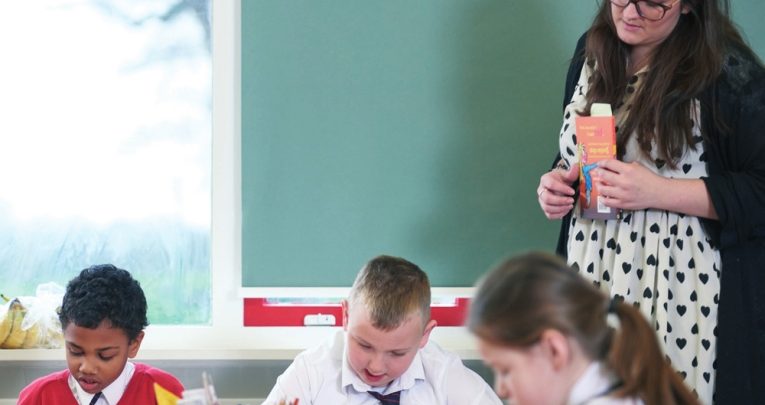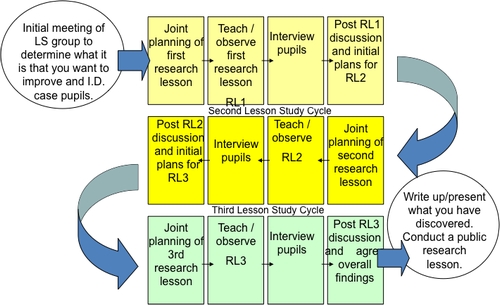Supercharge Your Understanding Of Pupils And Improve Your Teaching Through Lesson Study

Peter Dudley explains how the simple structure of Lesson Study has made big improvements to teaching and learning in primary schools…
- by Peter Dudley

I taught for six years before I encountered a technique that helped me to really improve my practice – and when I did, it was like a lightning rod.
Instantly, it gave me a means of professional learning I could use with my pupils, in my classroom, and with my colleagues. But it wasn’t until much later that I, along with the rest of the world, discovered Lesson Study in 2001. In many ways it was like the ideas I had been experimenting with, only far more nuanced.
It was then that I realised there were forms of teacher development far more advanced than our own.
A tool for teacher learning
For those of you unfamiliar with the practice, Lesson Study (LS) is a tool that amplifies the understanding teachers gain both from what pupils learn in the classroom and from their peers. This new knowledge is then used in the design and practice of subsequent teaching, which is systematically shared with other teachers.
LS is therefore primarily a tool for teacher learning, which in turn is used to improve pupils’ learning. Teachers collaborate in ‘systematic enquiries’ into their students’ learning in sequences of ‘research lessons’. These lessons are followed up with pupil interviews, and the combined findings are then used to inform subsequent research lessons. Any pupil and practice knowledge that emerges is there to replicate and pass on.
Sound confusing? It really isn’t. Just look at the diagram below, which shows the process step by step.
The Lesson Study process
 Dudley, 2015: Professional Learning for our Time; Routledge. London
Dudley, 2015: Professional Learning for our Time; Routledge. London
Using Lesson Study to improve maths
Enid Norwood Infant School knew it had to raise pupil attainment in mathematics – but while school leaders focused teachers on key evidence, they left it to Lesson Study groups to determine the precise approach most likely to yield improvement for their children. Knowing that children were being taught maths while still in the fairly early stages of learning English, the three teachers in the LS group decided to create as many opportunities as they could for the children to visualise and verbalise their thinking in these lessons, in ways that also let their peers see, engage with and contribute to their ideas. They opted for Singapore’s bar method as the best approach, since the bar offered an important visual representation or aide-memoir. The first thing the Lesson Study group did was plan and teach a sequence of research lessons that developed children’s concepts of ratio and proportion, using the ‘bar’ to represent a long-jump pit. In these lessons, imaginary children were trying to beat their personal best jumps, comparing them with their peers’ jump distances and expressing the proportions in terms of fractions.
The teachers found that the bar proved to be a very simple resource, through which children could express their thinking. It allowed them to ‘park’ provisional thoughts so they could be checked with measurements and calculations, and freed up pupils’ working memory, thus helping them to achieve at higher levels and in greater depth than anticipated. To find out how successful this plan had been, the LS group tracked three case study pupils over the three research lessons – predicting how each might be doing at key points, and comparing that to what they were actually doing in those lessons. In the second and third research lessons, the teacher was released from his responsibilities at the front of the class and his two LS group colleagues took over teaching duties. This gave him the opportunity to observe his pupils’ learning in close-up, giving him a perspective on the children’s learning that he’d never seen before.
Making sense of your notes
Have you ever had a discussion with colleagues that seemed groundbreaking, only to find days that later, when you come to write up your notes, that your cryptic flipchart ramblings have failed to capture any value from the discussion? At Cobblestones Primary School, the deputy head realised that LS groups were losing valuable information for exactly this reason. Her response was to insist that group members be accountable to their evidence base – the LS workbook – to ensure that observation notes weren’t sloppy or written in shorthand. When teachers start discussing and comparing their observations of case study pupils, vital information surfaces emerge that can lead the group to previously unseen, deep and complex understandings of a child’s learning. The way in which we note and record lesson study discussions is therefore crucial, so as to ensure that this information doesn’t slip through the cracks. The group decided to take turns typing up the notes after each discussion up to 500 words. Not only would this adequately capture the outcomes of the discussion, but also allow the writer to notice patterns or spot insights that had perhaps been missed at the time.
Passing on your knowledge
The natural extension of the LS approach is to expand beyond your own school. Getting teachers from a group of schools together to plan a programme of lesson studies for a whole academic year means you can share challenging experiences and solutions, as well as best practice. Cobblestones has now built expectations for LS into its job descriptions for teachers, middle and senior leaders, as well as the roles of governors. Edith Norwood Infants, meanwhile, has passed on its learning to others by demonstrating its techniques to colleagues from local schools and the Local Authority in a public research lesson. Afterwards, visitors, teachers and pupils discussed the benefits, merits and limitations of the bar approach that they had seen a demonstration of.
These public research lessons are common practice in Lesson Study’s country of origin, Japan, where it is as much of a moral imperative to pass on new discoveries and best practice for teachers as it is for scientists.
Group therapy
Getting the dynamics of your LS team right…
The LS group at Enid Norwood Infant School adapted its Lesson Study group protocol from the LSUK Handbook, using it to establish that all members of the group were equal as ‘teacher learners’ in the group.
All ideas would be given positive consideration, even if not ultimately used. This meant that all members felt safe to take risks in venturing their thoughts. With this open approach, they increasingly became a close-knit group as the process went on, their formal roles in school put to one side as they solved problems together as equals.
Peter Dudley is visiting Professor of Education at the University of Leicester and honorary secretary of the World Association of Lesson Studies; for more information, visit lessonstudy.co.uk or follow @lessonstudyuk











